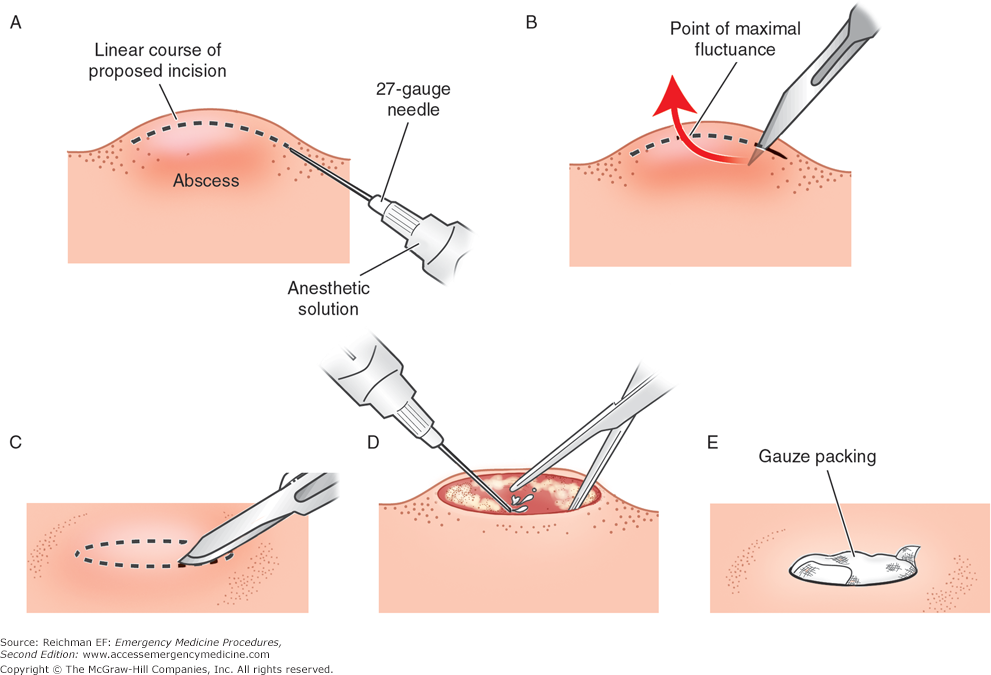Abscess Incision and Drainage (I&D)
From Guide to YKHC Medical Practices
Small abscesses may be drained via needle decompression however most abscesses seen in the emergency room benefit from scalpel incision and drainage.
- Although incision and drainage is not a sterile procedure and does not require sterile technique, typically skin is cleansed with chlorhexidine or povidone-iodine prior to placement of a field block with lidocaine or bupivacaine.
- Use a scalpel with a #11 blade to make an incision into the abscess pocket and loculations are bluntly dissected with forceps or wound probe.
- While small abscesses may be allowed to drain on their own, most abscesses warranting I&D benefit from packing with either plain gauze, iodoform gauze or a drain.
- Large abscesses may require two incisions to be made and placement of a through Dermastent or penrose drain.
- All purulent drainage should be sent for wound culture to guide antibiotic therapy.
- Per YKHC guidelines abscesses with >/= 10 cm of cellulitis should be covered with antibiotics.
- If there is concern for deep abscesses formal or bedside US may assist in evaluation.
